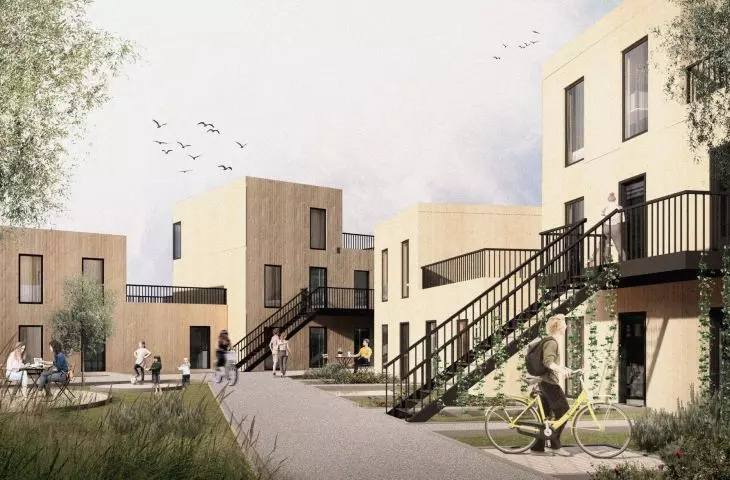As the capital of the Italian economy and the most European Italian city,Milan is developing at an extremely fast pace. New infrastructure is popping up at every turn, and migrations of people from all over the world to this dynamic city are the order of the day. The M4EVERYONE project, by students and faculty of architecture at the Silesian University of Technology: Michał Galuszka, Dominik Kowalski, Patryk Prychodko and Agata Goleśna, aims to create new living spaces for different social groups, using the M4 subway line.
land development
© Michal Galuszka, Agata Golesna, Dominik Kowalski, Patryk Prychodko
affordability and sustainability
Theaffordability of the project is expressed not only in the architectural solutions, but most importantly in the creation of a socio-economic model that aims to integrate different social groups. The project plots are less than a 15-minute walk from the new M4 subway stations. The project assumes that all elements will promote freedom, equality, accessibility and diversity, following the modern directions of Milan's urban development.
diagram of building modules and structures
© Michal Galuszka, Agata Golesna, Dominik Kowalski, Patryk Prychodko
subway scheme and mobility
The new M4 subway line is a key component of the project. Design plots are located around the subway stations to maximize pedestrian space. No parking spaces are included in the design to promote sustainable mobility. Walking to the subway station in less than 15 minutes allows people to take full advantage of the space. The lots also accommodate forms of sustainable mobility, such as car-sharing, bicycles and urban scooters.
availability of space
© Michal Galuszka, Agata Golesna, Dominik Kowalski, Patryk Prychodko
characteristics of male and female users
Conducting social analyses was necessary to create profiles of users and users of the facilities. This resulted in the creation of groups and a socioeconomic and functional model. Joining the community of temporary users allows additional reduction of operating costs for permanent residents, through rental subsidies.
profiles of users and users
© Michal Galuszka, Agata Golesna, Dominik Kowalski, Patryk Prychodko
Student people need small apartments located close to universities or public transportation networks. Due to limited budgets, male and female students are open to cooperating or sharing an apartment to reduce costs. They can engage in various activities, such as guiding tourists, helping seniors or helping children with homework.
elements of the building complex
© Michal Galuszka, Agata Golesna, Dominik Kowalski, Patryk Prychodko
Seniors and senior citizens need apartments without architectural barriers, easily accessible from the outside and with a small garden for growing plants. It is important for them to be an active part of the community, spending time with their neighbors. They can get involved in caring for children, cooking dinner or taking care of the estate garden.
elevation and cross-section
© Michal Galuszka, Agata Golesna, Dominik Kowalski, Patryk Prychodko
Families need spacious apartments to accommodate the growing number of people. The safety of children and easy access to other parts of the city are key for them. They can engage in additional social activities after work hours, doing community organizing activities and taking care of apartments for rent.
apartment floor plans
© Michal Galuszka, Agata Golesna, Dominik Kowalski, Patryk Prychodko
Temporary users and users need a short stay in the city. They want easy access to familiar places and transportation and to feel safe. They may be tourists or people on a business trip. Residents can decide which user will be their temporary neighbor. The presence of temporary users creates an opportunity to reduce rental costs for permanent residents through short-term rental income.
interior visualization
© Michal Galuszka, Agata Golesna, Dominik Kowalski, Patryk Prychodko
M4EVERYONE is a response to the dynamic changes and needs of Milan. It integrates different social groups, promotes sustainable mobility and adapts to modern urban trends. Through the use of new transportation infrastructure, the project not only responds to contemporary challenges, but also creates a socio-economic model that supports the development of the city in the spirit of freedom, equality, accessibility and diversity.















































